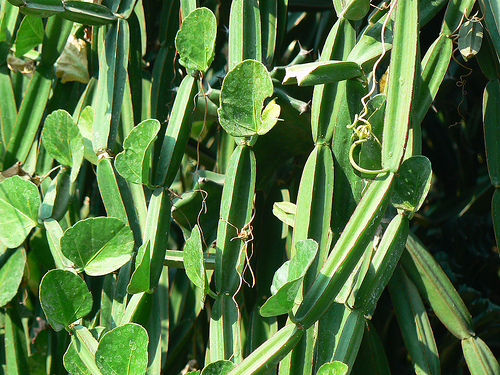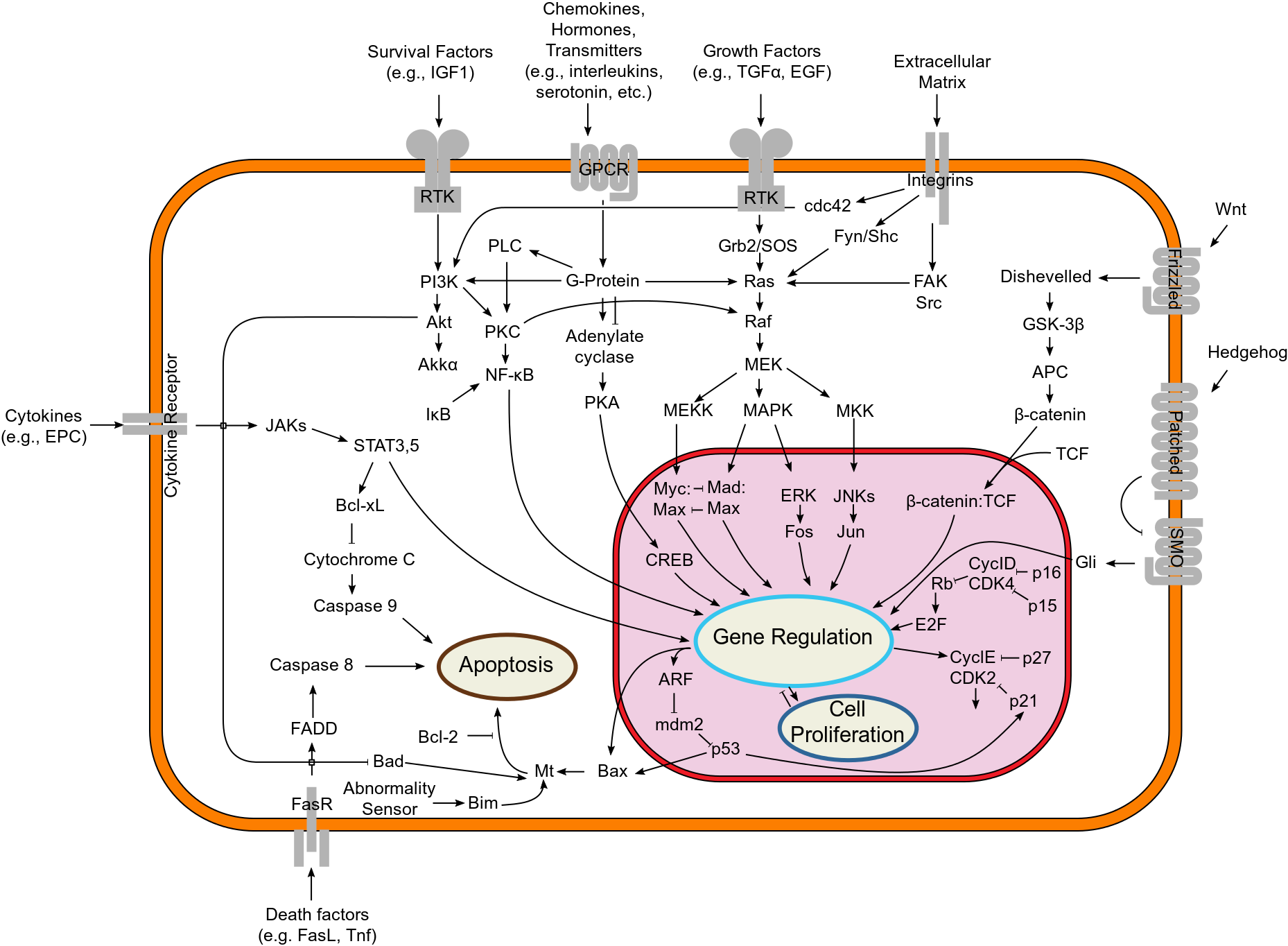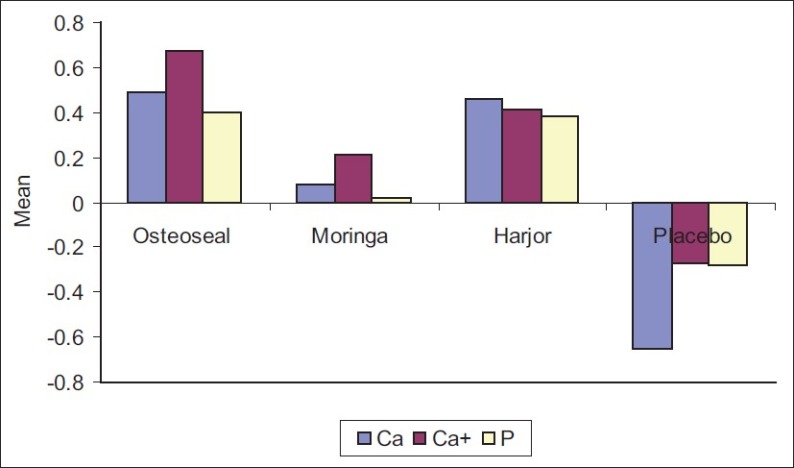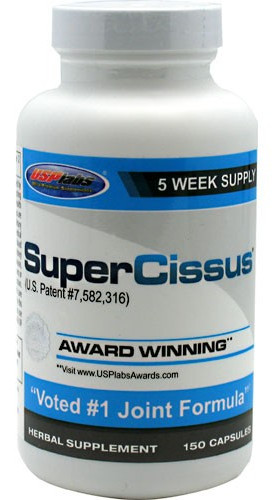Cissus quadrangularis is a perennial plant of the grape family.
It has a history of being used in various Ayurvedic classical medicines, but has recently been rediscovered in the Western world due to its incredible joint and bone support effects.
So we're on the hunt to find "the perfect joint supplement stack for you", and cissus is one such relatively unknown ingredient with incredible science behind it.
TL;DR
- Benefits: Cissus is great at healing injuries, especially broken bones, injured ligaments, and tendons.
- Dosage: 3000mg per day (in two or three dosages across the day), taken prior to meals (but not prior to workouts).
-
Preferred cissus products:
Capsules are much preferred to powder due to the bitter taste.
- Side Effects: None observed at doses at or under 3.2g per day.
This guide was written by Joshua Barreiro of the Temple University Department of Kinesiology.
Cissus Quadrangularis Benefits

This plant has phenomenal joint and bone healing properties that the Western world is finally "rediscovering"
Cissus is primarily used to help heal broken bones and injured ligaments & tendons.
However, cissus has applications that extend past these. Cissus supplementation may also
- Assist in weight loss[1,2]
- Lower cholesterol & triglycerides[1]
- Alleviate joint pain[3]
- Possess antioxidant[1,4] and anti-inflammatory[5,6,7] potential
For the purpose of this article we are going to just focus on exploring its joint, cartilage, and bone-enhancing properties.
Before we get into the heavy details, you can sign up for price drop alerts on Cissus supplements to stay on top of any deals:
Cissus Quadrangularis – Deals and Price Drop Alerts
Get Price Alerts
No spam, no scams.
Disclosure: PricePlow relies on pricing from stores with which we have a business relationship. We work hard to keep pricing current, but you may find a better offer.
Posts are sponsored in part by the retailers and/or brands listed on this page.
Connective Tissue Background: What are we fixing here?

Your ligaments bind to the bone. Needless to say, when they're injured, it's painful and horribly disruptive. Image courtesy Wikimedia Commons
There are four classes of connective tissue; the fibrous tissue of ligaments, cartilage, bone tissue, and blood. All four of these classes of connective tissue share three common elements, one of them being cells.
There are three kinds of cells we are going to focus on here:
- fibroblasts
- chondroblasts
- osteoblasts
What do these connective tissues do?
The first part of the name tells us which kind of connective tissue the cells are associated with (i.e. osteo=bone) and the second part (“blast") tells us that they are precursor cells.
So together we know these are cells that are used for the synthesis of new tissue.
- fibroblasts → fibrous tissue of ligaments
- chondroblast → cartilage
- Osteoblast → bones
Injury time: send nutrients to the damaged site
Connective tissue becomes damaged as the result of an injury, nutrient rich blood flow is increased to the area to begin the healing process. Amongst those nutrients there are also cytokines and neutrophils.
- Cytokines are cell signaling proteins that will trigger the inflammation process in the cell.
- Neutrophils are a type of white blood cell that responds to the injury site and helps defend the site against invading pathogens.
Both of these contribute towards the inflammation of the damage area. This is important because inflammation is the body's protective response to the injury and needed in order to begin the healing process. It does this by clearing out the damaged tissue and initiating tissue repair.
So where does cissus fit in here? How does cissus work?
First, several compounds found within Cissus Quadrangularis have been shown to improve the mobilization of the blast cells to the injured area.[8]
-
Better Blast Cells = Better Recovery
An overview of major signal transduction pathways in mammals. We need cytokines, but too much cytokine activation during injury leads to too much inflammation. Image courtesy Wikimedia Commons.
What this means is when you take cissus, the above blast cells respond faster to the injury leading to overall faster repair and recovery. This immediately means that we're going to get "connective tissue rebuilders" at work in the right place.
Note that it's not the cissus that's going to the joint to make repairs, it's your own natural cells that it helps nudge along.
In addition to this, various compounds found within cissus have also been shown to increase the retention of calcium, phosphorous, collagen, and mucopolysaccharides.[8] This provides the injured area with the building blocks it needs for the repairs.
The two mechanisms above effectively make for an incredible one-two punch of delivering the right kinds of cells to the right places and keeping the necessary components for them to work their magic on.
-
Bone injury healing
But connective tissue repair is just the start for cissus. Regarding bone injuries, cissus has been shown to increase osteoblast proliferation (remember, osteo = bone).[9]
In one study researchers took dogs with broken limbs and gave some cissus and let the others heal naturally.[10] What they found was the dogs who were given cissus healed significantly faster than the dogs who didn’t receive cissus.
Harjor is cissus, and it had an incredible effect on bone healing.[14] Talk to your doctor, but if you break a bone, cissus is a must-consider supplement alongside calcium, magnesium, and Vitamins D and K. Note: The supplement that "beat" cissus here (Osteoseal) is made primarily of... cissus!
Cissus benefits extend beyond bones too. Collagen synthesis has also been shown to increase as a result if cissus.[11]
Collagen, which is the most abundant protein found in the body, is the substance that essentially holds the whole body together. It can be found in the bones, muscles, skin and tendons.
-
Inflammation is good... but too much is not
Earlier we mentioned that cissus was an anti-inflammatory and also that inflammation was an important part of the healing process. Taken at face value, these statements can seem a bit contradictory, so allow us to clarify.
While inflammation is important, too much inflammation can be counter productive.
As a result of inflammation, blood vessels in the area dilate. This process is referred to as hyperemia and is an contributing factor towards the typical characteristics many associate with inflammation such as
- pain
- swelling
- heat
in the injured area.
But it gets worse before it gets better...
An enzyme called myeloperoxidase is also released as a result of this. This enzyme produces an cytotoxic acid called HOCI.
So during this process not only is bacteria eliminated but also because HOCI is toxic to all cells, some of the healthy cells are also eliminated. These are cells that are needed for the recovery of the area. We can think of this as a casualty of the healing process, but it doesn’t have to be. If we can control the inflammation response we can prevent some of this.
So again... where's Cissus come in?!
Cissus has improved bone healing in dogs as well as humans[10] - and likely for all mammals. This here is a beagle. Image courtesy Wikimedia Commons.
Earlier, we mentioned that in response to an injury, cytokines and neutrophils are released to the area and these contribute towards inflammation.
The great news is that cissus can help to reduce the release of these two double-edged swords, keeping inflammation in check.[12]
And by reducing inflammation and the subsequent process described above, cissus can reduce the pain and swelling that is associated with bone, tendon, and ligament damage.
-
Cissus on pain reduction
Research backs the above statement up, too:
- In one study individuals who experienced chronic joint pain were given cissus and had a 31% reduction in pain.[13]
- In another study done on humans, cissus supplementation reduced pain in individuals with mandibular fractures.[14]
-
Healing time and Recovery
Cissus also can help speed up the recovery process:
In some studies, cissus has been shown to reduce the healing time of bone fracture up to 53%![15] As noted in a separate study, this is because cissus can speed up healing process in bone fractures via an increase in bone mineralization.[8,14]
Researchers believe that this benefit extends to healthy bones as well. In one study researchers were able to prevent loss in bone strength and thickness.[16]
As seen above, cissus is very effective in speeding recovery from injuries, reducing pain and discomfort from injuries, alleviate pain from injuries and reduce inflammation.
So now what? What should we look for when shopping for cissus and where can we buy it?
Cissus Quadrangularis – Deals and Price Drop Alerts
Get Price Alerts
No spam, no scams.
Disclosure: PricePlow relies on pricing from stores with which we have a business relationship. We work hard to keep pricing current, but you may find a better offer.
Posts are sponsored in part by the retailers and/or brands listed on this page.
Cissus dosage: How much should you take and how should you take?
The recommended dosage of cissus is roughly around anywhere from 600mg to 1000mg per serving taken three times a day for a total of 3000mg a day.
However if you are using a cissus product that has been standardized for the ketosterones, you can get away with taking less. For example, if you are taking a cissus extract standardized to 2.5% ketosterones, you only need around 300-600mg. We discuss these ketosterones in a section below.
Additional Notes:
-
Take it prior to meals
Studies have found that cissus is most effective when taken 30 minutes prior to meals.
-
This is not a pre workout supplement!
Cissus supplementation may have muscle relaxing properties so it is not recommended to take prior to a workout session.
-
Give it time
Like most herbal supplements, everybody will react differently due to individual variability amongst us all so,some people may see and feel results as quickly as one week, while others may not feel the effects of cissus for some time.
For your first time taking cissus we recommend you start at the low end of the dosage range for about a week. After a week you can slowly increase the dosage until 3,200mg or until benefits are noticed.
-
Powders are brutal - stick to capsules
USPLabs' Super Cissus had a patented process and was the first in the sports nutrition industry to bring cissus back to athletes. Use as directed.
Cissus supplements are typically available in 2 forms, in a bulk powder or in capsules. Normally on PricePlow, we're into saving money, and the powders are definitely cheaper per gram. However, the powder is extremely bitter and many people are not able to tolerate this, so the capsules may be a better choice for most.
Ketosterones: Differentiating cissus products
Many cissus products will list ketosterones on the label. These are a type of phytochemical found in the herb, and their potency dictates how the supplement will behave.
Remember, cissus is a plant, not a drug - so its effects are going to heavily rely on how the extract is standardized.
Within the plant, there are several compounds that are responsible for the effects we're looking for (ie improved recovery time). Cissus contains several compounds such as flavonoids, phytosterols, triterpenoids, tannins, ketosteroids, ascorbic acid, calcium, and other metabolites.[17,18] Getting into each of them is beyond the scope of this write up, but we will briefly cover the one that is marketed and that is the ketosterones.
What are the ketosterones?
Ketosterones are plant sterols and are one of the active ingredients found in cissus and is the one that is primarily responsible for the joint health, tendon recovery, and other benefits we discussed earlier.
While all parts of the cissus quadrangularis plant are usable, including the stem, leaf, flower and fruit, a high percent ketosterone extract is what you want to look for.
Are there any side effects?
Supplementation with cissus appears to be safe at the above recommended doses. Several safety and toxicology studies have been done on cissus and no observable side-effects have been noted.[1,2,3]
We do not recommend you pass 3,200mg of cissus per day.
What's the Best Cissus Product?
We typically monitor the prices of three products:
USPLabs was the company to bring Cissus back into the fold of joint supplements for sports nutrition, and is typically the most trusted brand. They have a patented process on preparing the supplement[19], and consistently rate best in class.
Primaforce claims 20% ketosterone content, whereas SNS claims 5%. Primaforce has both pills and powder available but we stick to the capsules and recommend you do the same.
Remember, the entire cissus plant has therapeutic benefits, so ketosterones aren't everything, but these three products have shown the most promise in terms of joint and bone support.
You can compare prices and sign up for deal alerts on each page, monitor all cissus products on our Cissus products page, or see a few of them below:
Cissus Quadrangularis – Deals and Price Drop Alerts
Get Price Alerts
No spam, no scams.
Disclosure: PricePlow relies on pricing from stores with which we have a business relationship. We work hard to keep pricing current, but you may find a better offer.
Posts are sponsored in part by the retailers and/or brands listed on this page.
Stacking Cissus
-
For joint pain, cissus can be taken with fish oil, curcumin, an MSM Supplement (OptiMSM preferred), and glucosamine sulfate. More information on each of these supplements will be covered in future parts of this series.
-
For bone health, cissus can be taken with vitamin D & K, plus calcium and magnesium.
As always, see your doctor before beginning any new diet or supplementation program. No statements on this page have been approved by the FDA, but sources are cited below.
This was the first article in our new Joint Supplement series. Josh's next article will feature Curcumin, a great supplement to stack with Cissus. We also have a great new article discussing MSM Supplements, and how they're not "just for old people"
Note: the herb is also known as harjor.






Comments and Discussion (Powered by the PricePlow Forum)